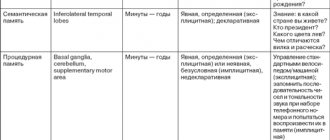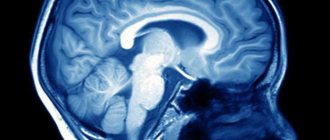The cranium performs a vital function in the human body. This bone structure is the protective shell of the brain, and therefore has a certain strength. However, there are situations when the integrity of the skull, and, accordingly, the safety of brain tissue, may be at risk. Injuries, diseases and abnormalities in the development of the cranium can directly threaten not only human health, but also human life. Considering the structural features of the skull, as well as the density of its structure, the value of non-invasive methods for examining this bone structure cannot be overestimated. One of the most common and accessible diagnostic methods is skull radiography. It is this that doctors often prescribe as the first stage of patient examination, preceding the more complex and expensive one - computed tomography and magnetic resonance imaging.
How does the skull work and what functions does it perform?
The cranium is part of the human skeleton. Essentially, it forms the bone frame of the head.
Content:
- How does the skull work and what functions does it perform?
- What does a skull x-ray show and why is it prescribed?
- Indications and contraindications for x-rays of the skull
- Preparation requirements, procedure for performing skull x-rays
- Types of skull radiography
- Features of radiography of the skull in children
- How are skull x-rays interpreted?
This part of the skeleton has its own characteristics, for example, the growth and development of the bones of the skull occurs before a person reaches the age of 30-32 years. In addition, as a person grows older, the proportions of the relationship between the brain and facial parts change, the cartilage located between the bones of the base of the skull disappears, and the fontanelles (non-ossified areas of the cranial vault connecting its parts) become overgrown.
The anatomical structure of the skull includes 23 bones, two sections - the brain and the face, while the first is significantly larger in volume than the second.
In the facial part of the skull there are paired and unpaired bones: the vomer, the ethmoid and hyoid bones, the lower jaw, the inferior nasal concha, the upper jaw, the nasal, palatine, zygomatic and lacrimal bones.
The brain part of the skull is divided into a vault and a base, and is formed by the frontal, occipital, sphenoid, parietal and temporal bones. In the area of the crown there are the parietal bones and parietal tubercles - characteristic convex parts of bone tissue. The temporal bones contain pyramidal processes containing the vestibular apparatus and auditory receptors.
All the bones of the skull are connected by sutures - fixed formations of a fibrous structure. The exception is the lower jaw - it is mobile, and is connected to the main part of the skull by ligaments and paired temporomandibular joints.
What is the purpose of the skull in the human body? First of all, it is a protective box for the brain. The skull is the bony frame of the head and determines its shape. It can be argued that the protective function is the main function of this bone structure.
In the area of the skull are the original openings of the respiratory and digestive tract, as well as the human sensory organs; facial muscles are attached to his bones, which, together with the bones, determine the facial features of a person.
Thanks to the mobility of the lower jaw, a person has the ability to perform the chewing function. The bones of the skull are part of the speech apparatus, allowing communication through articulate speech, and the bones of the jaws themselves represent the base of the teeth.
The occipital bone of the brain part of the skull connects it to the spine; it provides an opening for the transition of the brain into the spinal cord.
Respiratory and speech activity, food absorption, and the work of almost all sense organs and the brain are practically impossible if the cranium cannot fully perform its functions.
How it works
Craniography uses X-rays to visualize the cranial bones and brain.
The rays affect tissues, are absorbed in them and produce radiation at the output, which appears in light and dark shades. The image is captured by the camera and reflected on the computer. Light shades represent bones with dense structures, while dark shades represent soft tissues with cavities.
During a targeted examination, dark features of cracks, growths or fractures appear on light images of bones. Using structure analysis, a diagnosis is made.
What does a skull x-ray show and why is it prescribed?
A common misconception is that head x-rays are intended to examine the brain. In fact, this diagnostic method is more effective for studying the bones of the skull along with the teeth.
The appointment of a procedure is usually preceded by the patient contacting a doctor with certain complaints. Therapist, oncologist, neurologist, endocrinologist, ophthalmologist, surgeon, otolaryngologist - this is an incomplete list of specialists who can refer the patient for this examination.
The doctor issues a referral for an X-ray of the skull if the patient complains of the following symptoms:
- tremor of the upper extremities;
- constant or recurrent headache;
- frequent dizziness;
- causeless nosebleeds;
- feeling of darkening in the eyes;
- decreased hearing and visual acuity;
- pain when chewing.
The purpose of the procedure is:
- establishing a primary diagnosis or checking an existing diagnosis;
- development of treatment tactics;
- determining the grounds for surgery, radiotherapy or chemotherapy;
- checking the effectiveness of the treatment.
“What does a skull x-ray show?” – people being examined often ask the doctor who ordered the x-ray this question.
A doctor of appropriate qualifications can determine from a high-quality image the presence of the following pathologies and diseases of the skull bones:
- cyst;
- osteoporosis of bone tissue;
- congenital anomalies of the structure and deformations of the skull;
- cerebral hernias and pituitary tumors;
- hematoma;
- osteosclerosis;
- osteomas (benign bone tumors), meningiomas (benign tumors of the soft membranes of the brain), malignant tumors, metastases;
- fractures and their consequences;
- signs of intracranial hypertension and hypotension;
- consequences of inflammatory processes in the brain.
Indications and contraindications for x-rays of the skull
Due to the fact that the procedure uses x-rays, it should be carried out only on the direction of a doctor, and only in cases where there is an objective need to obtain information about the condition of the skull bones in this way.
Among the indications for a skull x-ray:
- suspected traumatic brain injury (open or closed);
- tumor processes;
- possible developmental anomalies - congenital or acquired;
- pathologies of ENT organs, for example, sinuses;
- the presence of a number of symptoms with an unclear etiology: disturbances of consciousness, dizziness, constant severe headaches, symptoms of hormonal imbalance.
As for contraindications, they are related to the dose of radiation received during the diagnostic process. For example, examination methods involving the use of X-ray irradiation are generally not recommended for pregnant women, especially in the first trimester. If possible, the doctor prescribes diagnostic methods that are gentler on the fetus.
The second category of patients for whom skull x-rays are prescribed with caution are children. Childhood is not an absolute contraindication for the procedure; moreover, in some cases, an X-ray of the skull is an objective necessity, for example, if it is necessary to confirm the doctor’s suspicions of congenital pathologies of bone development.
It is believed that modern X-ray machines cannot significantly irradiate a child during diagnosis. Thus, the permissible radiation dose per year for a person is no more than 50 microsieverts per year, and radiography equipment “gives” the patient a dose of no more than 0.08 microsieverts per session. In this case, the problem is the fact that not every medical institution has at its disposal modern X-ray machines with dosed radiation, and in X-ray rooms there is more often outdated equipment that has been in use for decades. Nevertheless, sometimes you simply cannot refuse an X-ray of the baby’s skull. This diagnostic method is one of the most popular in pediatric neurosurgery, traumatology and neurology. If there are certain indications, skull x-rays are performed even for newborn babies.
Publications in the media
Fractures of the calvarial bones usually occur at the site of force. There are linear and depressed fractures. A LINEAR FRACTURE usually occurs as a result of a blow from a large area object. In itself, it does not have much clinical significance (with the exception of fractures of the squama of the temporal bone - see Epidural hematoma). Diastatic fracture is one of the types of linear fracture, characterized by the transition of the fracture line to one of the sutures of the skull (more often occurs in children). Diagnostics: craniography. The main distinguishing features of a linear fracture, vascular groove and cranial suture are as follows: • Linear fracture: color on the radiograph is almost black, the course is straight, there is no branching, the width is very narrow • The vascular groove: gray in color, the course is curved, usually branched, wider than the fracture line • Skull suture: gray in color, the stroke for each suture is standard, connects with other sutures, is of considerable width, has a jagged edge. No treatment is required , except in cases of a “growing fracture” (occurs in young children).
A DENTED FRACTURE occurs as a result of a blow to the head with a hard, small-area object (hammer, steel pipe, etc.). It is characterized by the introduction of bone fragment(s) into the cranial cavity, which can lead to local contusion, crushing of the brain, rupture of the membranes, and the formation of hematomas. Diagnostics . Craniography and CT Treatment . For an uncomplicated depressed fracture, conservative tactics are acceptable. In all other cases, surgical intervention is necessary - removal of bone fragments or their reposition. Indications for surgical treatment: depression of more than 8–10 mm or the thickness of the bone, focal neurological symptoms corresponding to the location of the fracture, signs of damage to the meninges (leakage of cerebrospinal fluid, cerebral detritus), open fracture. A relative contraindication is an asymptomatic closed depressed fracture in the area of the main sinuses of the dura mater. The prognosis depends on the volume of the affected area of the brain and its functional significance. Surgery to repair a depressed fracture does not affect the risk of developing late post-traumatic epilepsy. Note. In newborns and children of the first year of life, there is a specific depressed fracture of the bones of the calvarium of the “ping-pong ball” type. Treatment is indicated only for localization in cosmetically significant areas (for example, frontal). Synonym. Compression fractures of the skull
ICD-10. S02 Fracture of the skull and facial bones.
Preparation requirements, procedure for performing skull x-rays
This type of x-ray does not require any preparatory measures. Before it is carried out, the doctor clarifies the fact that there is no pregnancy, if we are talking about a female patient, explains exactly how the procedure will take place, how many pictures will need to be taken, what is required of the patient during the process. If the procedure is prescribed for a child, the parents prepare him for diagnosis and explain in a clear manner to the child how he needs to behave. Doctors do not set any restrictions on diet or the amount of physical activity before the examination unless they are required by the patient’s general condition, regardless of the prescribed procedure.
Before starting the diagnosis, the doctor asks the patient to remove all metal jewelry and accessories from the head and neck, as they may appear on the pictures in the form of additional darkening, thereby distorting the results.
The image can be captured in different positions - the patient can lie, sit or stand, depending on which area is being examined. The body of the subject is covered with a special protective apron with lead plates. The head, if necessary, can be fixed with special belts or rollers to ensure its complete immobility while capturing the image. The doctor takes the required number of pictures. During the process, he can change the patient’s position and position.
Pictures can be taken in the following projections:
- axial;
- semi-axial;
- anterior-posterior;
- posterior-anterior;
- right lateral;
- left side.
There is also such a thing as radiography methods. It involves recording images in special projections that allow obtaining an image of a specific area. For example, the methods according to Reza, Ginzburg and Golwin differ from each other, but they all provide an overview of the optic canals and the superior orbital fissure. Images according to Schüller, Mayer and Stenvers allow you to study the condition of the temporal bones.
Most often, for a doctor to make a diagnosis, it is enough to take pictures in two projections - the front and one of the sides. The whole procedure lasts no more than 5 minutes. It is absolutely painless, and the only atypical sensation that may arise from it is a metallic taste in the mouth due to exposure to x-rays.
Types of skull radiography
Considering the complexity of the structure of the skull, and the large number of bones that make it up, doctors distinguish two types of radiography of the skull:
- overview;
- sighting.
Plain radiography of the head is not intended to visualize any specific area of the skull. Her pictures show the condition of the bone structure as a whole.
Sight radiography makes it possible to examine the condition of a certain part of the skull:
- zygomatic bones;
- bony pyramid of the nose;
- upper or lower jaw;
- eye sockets;
- sphenoid bone;
- temporomandibular joints;
- mastoid processes of the temporal bones.
Sighted radiography images show the presence of calcifications in the bones, hemorrhages and hematomas in a specific part of the skull, calcification of parts of tumors, the presence of pathological fluid in the paranasal sinuses, changes in the size of bone elements associated with acromegaly, disorders in the area of the sella turcica, provoking pathologies of the pituitary gland, bone fractures skull, as well as the location of foreign bodies or foci of inflammation.
Survey craniography. Craniographic signs of intracranial hypertension.
Radiography. Survey and targeted craniography allows you to identify signs of intracranial hypertension: changes in the structure of the sella turcica (porosity of the walls, thinning, shortening, unfolding of the back of the sella), “finger impressions” (rarely observed in adults), divergence of cranial sutures (in young children). These general changes usually occur at the stage of pronounced clinical manifestations and their significance should not be overestimated. Local changes include hyperostosis (with meningiomas), focal bone thinning and osteolysis (with bone metastases, eosinophilic granulomas, osteosarcomas, etc.), as well as local calcifications characteristic of craniopharyngiomas (cloud-shaped shadows), oligodendrogliomas. Craniography is an important initial, but far from exhaustive study. Fine craniographic information is provided by the use of CT in the bone mode and especially spiral CT in the spatial reconstruction mode.
Craniography. This is the most accessible and widely used method of radiation diagnostics, which allows one to obtain information about the structure and shape of the skull, its size, developmental anomalies, traumatic changes, etc.
Craniography can be overview and targeted. Survey craniography is carried out in two projections - direct (front) and lateral (profile). When assessing survey craniograms, attention is paid to the size and general configuration of the skull, the structure of the cranial bones, the condition of the sutures, the severity of the vascular pattern, physiological and pathological calcifications, the shape and size of the sella turcica, developmental anomalies and traumatic changes. To detect local pathology, in some cases they resort to targeted images of individual areas of the skull (targeted tomograms of the sella turcica, images of the pyramids of the temporal bones according to Stenvers).
A survey craniography may reveal indirect signs of intracranial hypertension, which include: increased pattern of digital impressions, osteoporosis and deformation of the sella turcica, widening of the vascular grooves, emphasizing the vascular pattern, and in some cases, suture dehiscence. X-ray signs of increased cerebrospinal fluid pressure become especially convincing if they increase with repeated (dynamic) studies.
Anomalies of skull development. These include early overgrowth of sutures—craniostenosis, cerebral hernias, anomalies of the craniovertebral junction, among which basilar impression is of greatest clinical importance. Its degree is determined by the level of protrusion of the tooth of the second cervical vertebra into the cranial cavity.
Traumatic lesions. Fractures of the skull bones are characterized by a gaping lumen and clear edges of the bone. There are linear, comminuted, depressed, perforated and other fractures. With depressed fractures, doubling of the contours and compaction of the structure are visible. Linear fractures appear as a straight or zigzag fracture line. The bones of the skull are better visible on axial and semi-axial films (anterior and posterior).
Spondylography. Survey radiography of the spine is also carried out in two main projections: direct and lateral. Sometimes it becomes necessary to perform a spondylogram in an oblique projection at an angle of 45-60 degrees (if an extramedullary tumor is suspected - an hourglass-type neuroma of the root). If necessary, functional tests are performed with flexion, extension and tilting of the spine in physiological directions.
When reading spondylograms, attention is paid to the presence of curvature of the spinal axis, the severity of physiological bends, details of individual vertebrae, etc.
Survey images of the spine help to identify a number of pathological changes and greatly facilitate diagnosis, including diseases of the peripheral nervous system, spinal cord, and spine.
In case of spondylogenic radiculopathies, spondylography helps to determine indirect signs of intervertebral disc herniation (retro- and spondylolisthesis, decreased height of intervertebral discs, etc.).
Among the anomalies in the development of the spine, the so-called spina bifida is relatively often detected - non-fusion of the posterior part of the vertebral arches, mainly the sacral and lower lumbar. A special form of congenital spinal anomaly is Klippel-Feil syndrome - the fusion of several cervical vertebrae into a single bone mass. In case of ankylosing spondylitis (ankylosing spondylitis), due to ankylosis of the joints and calcification of the ligaments, the spine takes on the appearance of a “bamboo stick”.
In some cases, spondylography helps in diagnosing spinal cord tumors. Thus, extramedullary tumors can manifest themselves as expansion of the spinal canal, atrophy of the roots of the arches, flattening of their bases according to the level of the lesion and an increase in the distance between them, which is called the Elberg-Dyke symptom.
Features of radiography of the skull in children
In order for the child not to be afraid of an incomprehensible and unfamiliar procedure, he should be explained in simple and understandable words how radiography is performed, that this process does not cause pain at all, that parents may be nearby, so there is no reason for fear, and you just need to listen to the doctor. Very young children are allowed a pacifier.
The child is seated or laid down and carefully secured so that he does not move. All metal clips, jewelry and hair accessories must be removed. The body is covered with a lead apron; a lead collar can be additionally used to protect the thyroid gland.
After x-rays, the baby should be given plenty of fluids - fruit drinks, teas, juices with pulp, milk and fermented milk drinks to neutralize the effect of the received radiation dose.









